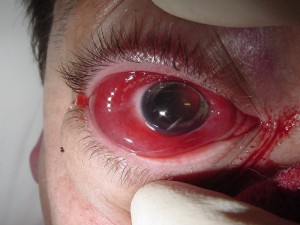Stopping the bleeding is very vital to the care and management of individuals in an emergency or disaster situations in order for them to increase their chances of survival. An extreme blood loss that results in the reduction of circulating blood volume is primarily the main cause of hypovolemic shock. Minor bleeding (such ass venous bleeding) usually stops spontaneously unless the individual has an existing bleeding disorder such or has been given anticoagulant medications.
Individuals who are rushed in the emergency department is comprehensively assessed for indications for shock such as cool, moist skin due to decreased peripheral perfusion, decreasing blood pressure, increasing heart rate, delayed capillary refill and decreased urine output. The main objectives of emergency management for bleeding is the immediate control of blood loss and to maintain adequate volume of circulating blood for tissue oxygenation in order to prevent shock and multiple organ failure. Individuals who are hemorrhaging are at high risk for cardiac arrest caused by decreased amounts of circulating blood therefore immediate management must be given to individuals experiencing active blood loss.
Control of External Hemorrhage

Application of a tourniquet to a limb is only permitted as a last resort when external bleeding cannot be controlled by applying direct pressure alone and immediate surgery not feasible. Due care must be observed when applying tourniquets because of the risk of potentially losing the extremity due to restricted blood flow. However, if no arterial bleeding is suspected, the tourniquet must be removed and direct pressure dressing is applied.
Ideally, the tourniquet must be applied just proximal to the wound and tied tightly enough to control arterial blood loss. Moreover, if the victim has suffered traumatic amputation with uncontrolled bleeding, the tourniquet must not be removed until he/she is prep for surgery.
Control of Internal Hemorrhage
If the individual shows no visible sign of bleeding but exhibits rapid heart contractions, decreasing blood pressure, thirst, cool/moist skin, apprehension and delayed capillary refill then internal hemorrhage is suspected. Usually, individuals with internal bleeding can be given a working diagnosis in the emergency department and are given palliative treatment to prevent further blood loss by administering large amounts of IV fluids and packed red blood cells at a rapid rate until a more definitive cause for the bleeding is identified and given appropriate treatment. The patient is maintained in supine position and is closely monitored every 15 minutes until vital signs become stable, baseline hemodynamic or circulatory parameters improved or until he/she is transferred to a more specialized unit such as the operating room or the intensive care unit.